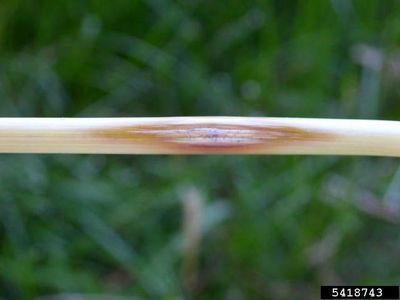What is Barley Sharp Eyespot?
Sharp eyespot is a fungal disease caused by Rhizoctonia solani, a fungus that also causes rhizoctonia root rot. Sharp eyespot can infect barley but also other grains, including wheat. Infections are most likely in soils that are light and that drain well. The fungus is also more likely to attack and infect when temperatures are cool and humidity high. Cool springs favor barley sharp eyespot.
Symptoms of Barley with Sharp Eyespot
The name sharp eyespot is descriptive of the lesions you’ll see on affected barley. Leaf sheaths and the culm will develop lesions that are oval in shape and that have a dark brown edge. The shape and coloring are like a cat’s eye. Eventually, the center of the lesion rots out, leaving a hole behind. As the infection progresses and when it is more severe, the roots will become affected, turning brown and growing in fewer numbers. The disease can also cause barley to become stunted and the kernels or heads to bleach and turn white.
Treating Barley Sharp Eyespot
In commercial grain growing, sharp eyespot is not a major source of crop loss. Infections tend to be more severe and widespread when a grain is grown in the same soil year after year. If you grow barley, you can rotate the location to prevent buildup of the fungi in the soil that can cause more serious outbreaks of disease. Preventative measures also include using seeds that are certified disease-free and amending your soil to be heavier and more fertile. Pick up plant debris each year if you have had an infection in your grain. This will limit the disease in the soil. You may try using fungicides to treat sharp eyespot, but it is typically not necessary. You should still get a good yield even if you see some lesions on your grain.
